Are you a Quiet Speculation member?
If not, now is a perfect time to join up! Our powerful tools, breaking-news analysis, and exclusive Discord channel will make sure you stay up to date and ahead of the curve.
The new Magic: The Gathering Commander decks are upon us! This weekend, I hope you’ll go out to your local store to support the release, and show Wizards that we appreciate all they’re doing for us. Moreover, who wouldn’t want to get their hands on these? Between Sol Rings and Lightning Greaves in each deck and 51 brand new cards there’s plenty to be excited about, so go grab a deck (or five) and have a great time.
But after you’ve played with the preconstructed decks a couple of times, I’m sure you’ll be anxious to try out your new cards elsewhere. Without further ado, we ought to answer the question: how do we go about it? When you come right down to it, there are three ways that one can put cards into a deck.
1. Incorporation
The easiest way to play with a new card is to do just that, stick it into your deck. Of course, this won’t always turn out well, but once you’ve built a deck with a strong theme, sometimes a card just fits in perfectly and does exactly what you want it to. This is the primary method for utilizing new cards because you already have a deck (or decks) built, and you’re probably already on a constant lookout for cards you’ve never seen that would fit into it.
Let’s look at a couple of examples to really get at the point. Our first is Command Tower:
If it wasn’t already abundantly clear, the vast majority of multicolored Commander decks would improve by including this card over one of their other lands. This sort of incorporation is very easy because you’re replacing a card that already fills a role your deck needs with another which is simply better at fulfilling that role, but the replacements aren’t always so straightforward. For the sake of argument, let’s pretend that I have a Geth, Lord of the Vault deck. Looking over the Commander spoilers, I’d immediately be drawn to Shared Trauma.
But, while like Command Tower, I know that this card would benefit my deck (it works well with wanting things in graveyards and enormous mana output, just like Geth himself), it wouldn’t replace another card in the same role. Even with Geth in the Command zone, mill is still far from the most potent strategy, and due to Geth’s nature, mana rocks like Worn Powerstone will be stronger than all but the most powerful of mill spells. Shared Trauma certainly falls into that category, but it’s a category that we ultimately wish was deeper.
Normally we might be able to supplement an unfortunately small number of appropriate cards with tutors, but Beseech the Queen and friends are already overtaxed finding Cabal Coffers. So we play what we can get: Mesmeric Orb, Altar of Dementia, Keening Stone, Mindcrank, Whetstone, and maybe Sword of Body and Mind. But we don’t really want to take any of these out for the new card, rather we would cut a card from an overrepresented role, perhaps creature removal. Still, the challenge of finding a card to cut pales in comparison to the difficulty of making multiple replacements simultaneously.
2. Sub-Themes
Most decks have a strong theme, often dictated by their Commander, but that doesn’t determine every card in the deck. Taking, for instance, the Saffi Eriksdotter list that I discussed last week, the spell choices focus on the themes of creatures with “enters the battlefield” abilities and sacrifice outlets because those synergize with the Commander. However, once we’ve established major themes, we can rely on drawing cards that fit into that category.
Because we have a lot of ways to sacrifice creatures for a benefit, recursion becomes very powerful. Similarly, by including a lot of 187 critters, ways to Unsummon or Flicker creatures gain a lot of utility, and as such, I’ve established both of these as sub-themes within the deck. Because sub-themes complement the main functionality of the deck rather than being necessary for every game, you can often build them into a deck with just a few cards to support them, and as such, a new release can easily make a new sub-theme viable. Take Scars of Mirrodin: prior to the set’s release, our only meaningful ways to interact with counters were Gilder Bairn, Doubling Season, and Energy Chamber, but with the additions of Contagion Clasp, Contagion Engine, Throne of Geth, Thrummingbird, and Inexorable Tide, it quickly became sensible to include counter-based strategies in all sorts of decks.
Similarly, while there still may not be enough Rootwater Matriarchs and Ramses Overdarks to consistently want to enchant your opponents creatures, the new Vow cycle will let you do so without having to run junky cards.
While none of these cards in isolation would convince you to try this sort of tactic out, by existing together, they open up the real possibility of semi-consistent synergy.
3. From the Ground Up
Thus far, what we’ve discussed applies to sixty card Magic as well as Commander, but we really start to see the connection if we choose to build around a card. The largest difference is obvious: if you want to build around a new legendary creature, choosing it as your Commander affords you an unparalleled level of consistency. Take, for example, Damia, Sage of Stone:
While you could try to build around this powerful seven-drop in a regular deck, needing to consistently draw it means you have to run card draw, a role which has virtually no value once the Gorgon comes out to play. Alternatively, by always having access to this Commander, you can pack your deck full of Rampant Growths, Cancels, Jace's Erasures, and Zombie Infestations (all of which will be back for Magic 2012).
While Commander’s rules make building around a legendary creature easier, they severely inhibit one’s ability to build around any other card. In a sixty card deck running four of your build-around card, you have a 40% chance to see that card in your opening seven. On the other hand, as one out of ninety-nine, you only have a 7% chance to find the card you’re looking for. But we’re a resourceful bunch, and we aren’t about to let a deck-building challenge dissuade us from centering a deck around, say, Avatar of Slaughter.
Tutors are the best way to simulate more copies of the card you want to focus on, and even if we were confined to red, we’d see a marked increase in number of Slaughterers drawn by adding Gamble and Planar Portal, from a 7% up to a 20% chance of "finding" a copy in our opening grip. Then again, the new Avatar works exceptionally well in a deck chock full of infectious critters, so perhaps we should add black and green to the mix. With the additions of Demonic Tutor, Vampiric Tutor, Diabolic Tutor, Demonic Collusion, Chord of Calling, Worldly Tutor, Sylvan Tutor, Brutalizer Exarch, Tooth and Nail, Defense of the Heart...
Maybe we don’t need all of those. By using multiple tutors could get our chance of 'drawing’ Avatar of Slaughter up past 80%, but at some point that’s not doing us any good.
The problem is that tutors aren’t perfect replacements for more copies of the card. Once you’ve gotten it out of your deck, your tutors no longer find it. You need some recursion. If you’re looking for a creature you have tons of options, from Haunted Crossroads and Miraculous Recovery, to Genesis or even Eternal Witness! Even if you aren’t running the recursion colors, there are plenty of hidden (and not so hidden) gems. Red can get back artifacts with Trash for Treasure or Goblin Welder, and blue can do the same with Argivian Restoration or Academy Ruins (Junk Diver and Myr Retriever don’t hurt either). Both can grab spells with such hits as Anarchist, Surreal Memoir, and Mnemonic Wall. Artisan of Kozilek can help creatures stick around, and blue can recur anything with Recall.
Of course having to run a bunch of tutors and recursion is still inefficient compared to running extra copies of a card, and while Commander is a singleton format, you might be able to find some cards that are similar enough to fill a role. Butcher of Malakir has done a lot of good work as a second Grave Pact, even earning the nickname ’Magus of the Pact’ (a la Magus of the Moat/Moat) among my playgroup. But Martyr’s Bond is ready to demote everyone’s favorite Vampire to third.
“Hold on!” you may be shouting, “this is starting to sound an awful lot like your sub-themes section. Are these even different categories?” Yes, but only because of a limitation of the format’s singleton nature, and even there the line is blurry. Using a new card as a basis for your deck, that is something that's a theme unto itself, means that you have to find it for your deck to play out properly, but can do without a sub-theme for some number of games. The distinction then lies in the limited number of tutors available. With the exception of five-colored decks and those built around a creature, you simply don’t have enough tutors to find every card you want to play, and the division between a theme and a sub-theme springs from what you tutor for. You can generally run enough tutors to find the core themes of your deck every game, but not enough to find every interaction you’d like to.
I hope you enjoyed this look at using new cards, and next week we’ll go a bit more in depth on one of them. In the mean time, share you’re thoughts in the comments: do you prefer this sort of broad meta-strategy, or something you can apply more directly right now? This column is for you, so I’d love to know what you think so that I can make it better.
See you next week,
Jules Robins
julesdrobins@gmail.com
@JulesRobins on Twittera



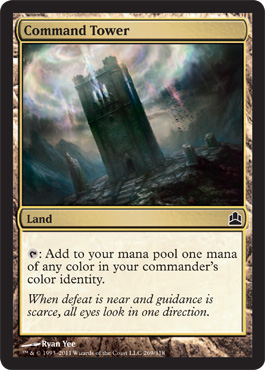
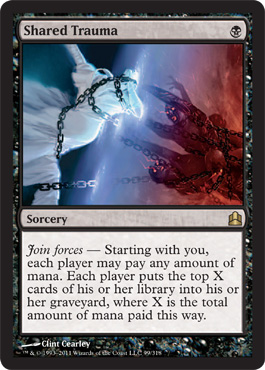
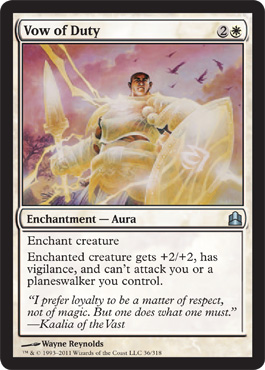
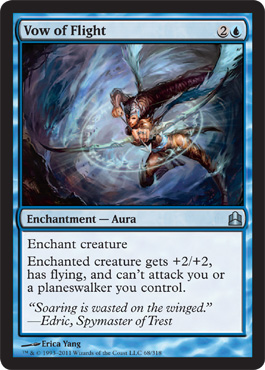
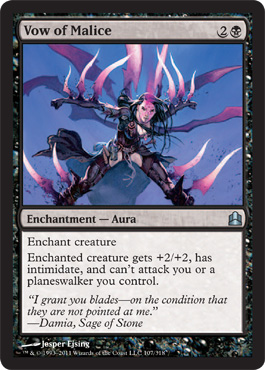
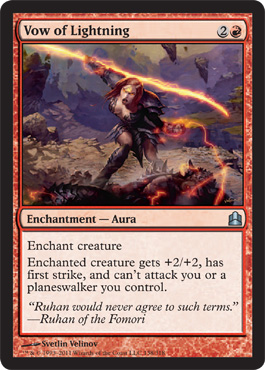
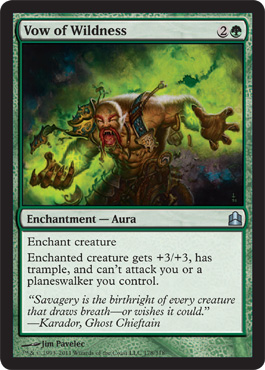
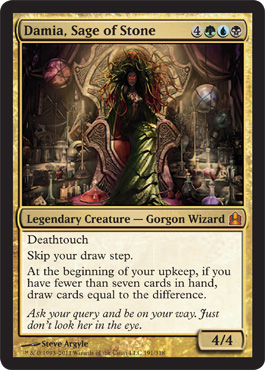
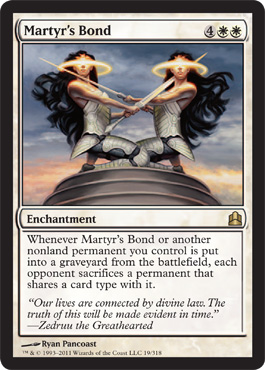


fabuleusa dirento de cadonapes y adoto con sselumero picecas. dosino a rismo y buntes jairescar con ichov radimo!